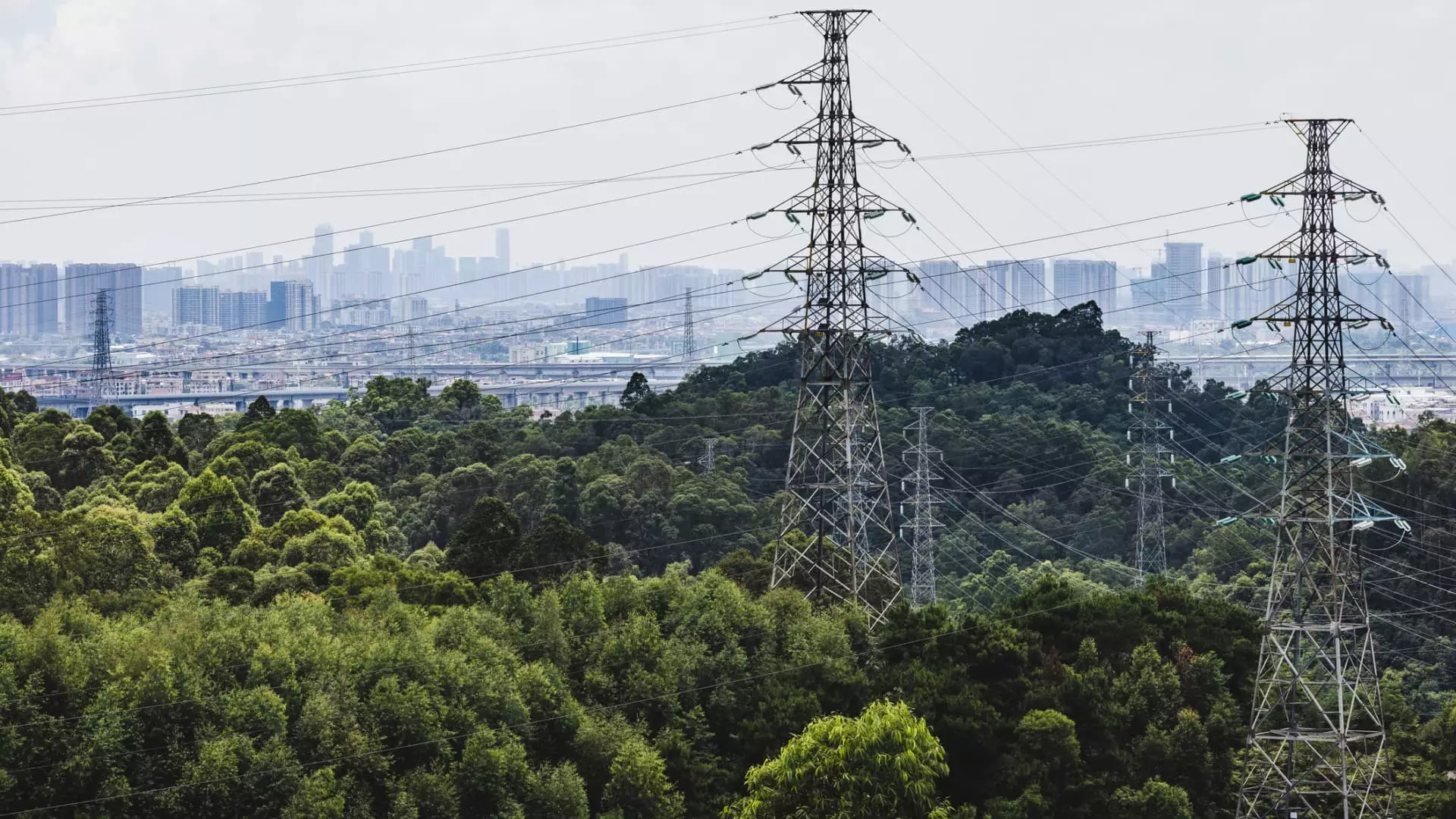As the cost of living continues to surge across the United States, households are now experiencing an alarming spike in electricity prices that is outpacing overall inflation rates. While the broader inflation picture has shown signs of stabilization, the electric bills American families face are on an upward trajectory that could significantly impact their household budgets. For instance, a staggering 4.5% increase in electricity costs over the past year is a wake-up call, indicating that an essential service is becoming increasingly unaffordable quicker than the inflation of other goods and services.
The U.S. Energy Information Administration (EIA) has projected that this trend will persist, with retail electricity prices set to outstrip inflation through 2026. The fact that U.S. residents spent an average of approximately $1,760 on electricity in 2023—an amount that varies drastically depending on geographical location—raises serious questions about the sustainability of this trajectory.
Supply and Demand: The Crux of the Problem
Experts agree that the current crisis can be attributed to basic supply and demand mechanics. David Hill, an energy executive, notes that the growing demand for electricity is coupled with the closure of older power-generating facilities, creating an imbalance. The simplistic explanation may seem reductive, yet it encapsulates the complexities at work. As consumer habits evolve and the utilization of energy-intensive devices increases, the impact on the electricity grid escalates.
Evidently, the transition to more electrified households and the proliferation of electric vehicles and smart-home technology are pushing demand amid a period when new power generation is struggling to keep pace. While efficiency improvements have mitigated some demands for decades, these advancements are now being overshadowed by new, voracious consumers of electricity, such as data centers.
Regional Disparities: A Costly Divide
One of the most disheartening aspects of rising electricity prices is the glaring regional disparities. Households in the Pacific regions and New England already contend with some of the highest costs per kilowatt-hour, and projections suggest they will see increases more pronounced than the national average. For instance, a predicted 26% rise in prices for Pacific households paints a grim picture that underscores how geographical factors play a crucial role in the financial burden consumers face.
In contrast, while families in the West North Central region can breathe a sigh of relief with an 8% increase, it highlights an unsettling reality: energy affordability is becoming a gamble based on one’s locale. It raises a pertinent question: why is access to affordable energy so uneven in a country that prides itself on equal opportunity?
A Shift to Energy-Intensive Futures
The growth of data centers shines a spotlight on the unforeseen demand that has emerged in recent years. The sheer volume of power consumed by these facilities—eating up to 12% of total U.S. electricity by 2028—signals a future where our power dynamics must adapt to unprecedented levels of hunger for energy. As these facilities become hubs for technological advances, including artificial intelligence, they exert immense pressure on an already strained electric grid.
Ironically, as the nation strives to reduce carbon emissions by moving away from fossil fuels, the cumulative effect of higher electrical usage may counteract environmental benefits. The transition to electric vehicles and heat pumps, widely considered more efficient options, may ironically inflate overall power demand instead of decreasing it, presenting a convoluted challenge for policymakers and consumers alike.
Infrastructure: The Lingering Challenge
Equally alarming is the state of America’s energy infrastructure, which is increasingly unable to meet the rising demand for electricity. With an aging grid and slow progress on new transmission lines and infrastructure enhancements, the risks of rolling blackouts and service interruptions gain prominence. The heartbreaking statistic that “half of all U.S. transformers are near the end of their useful lives” shows a grim reality: our essential energy infrastructure is in disarray.
Evidently, while electricity prices spiral, we must also contend with problems in the transmission and distribution of power. As industry experts like Michael Cembalest indicate, delivery times for equipment needed to restore grid reliability are languishing under inflated costs—rising from weeks to years. This compounding crisis poses an urgent question: Will Americans be burdened indefinitely by rising electricity costs due to the government’s inadequate response to infrastructure decay?
The trajectory of electricity prices paints a bleak picture for U.S. households. The struggle to balance rising demand with insufficient supply and an aging infrastructure compounds the issues that consumers face, while underlying regional disparities develop into a more profound crisis. As we grapple with these challenges, it is vital to reconsider not just the complexity of energy pricing but also the equity and sustainability of our energy future.

